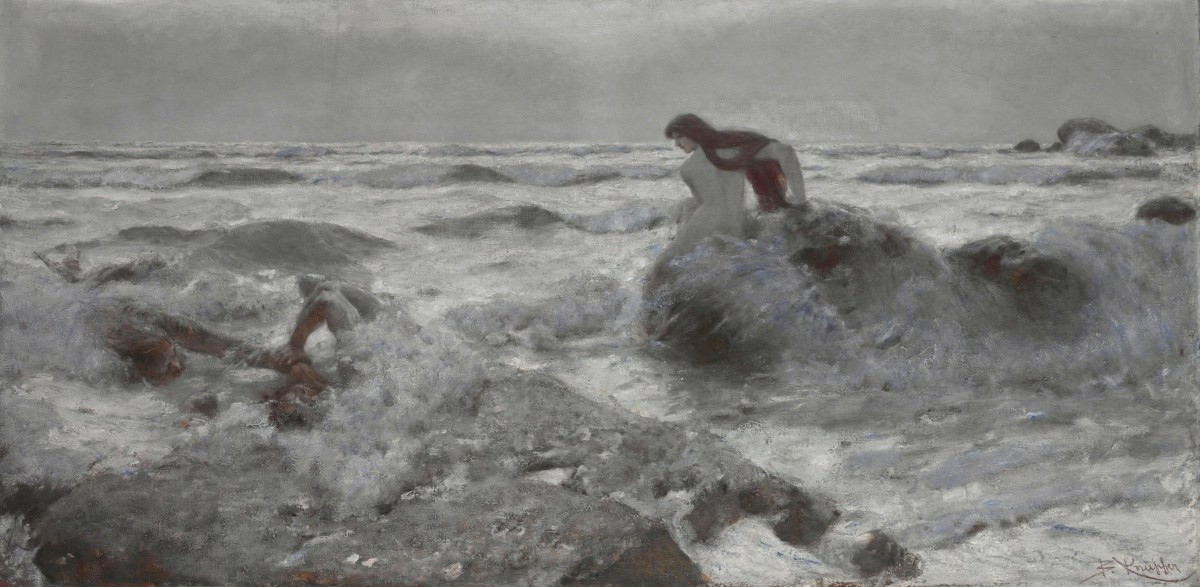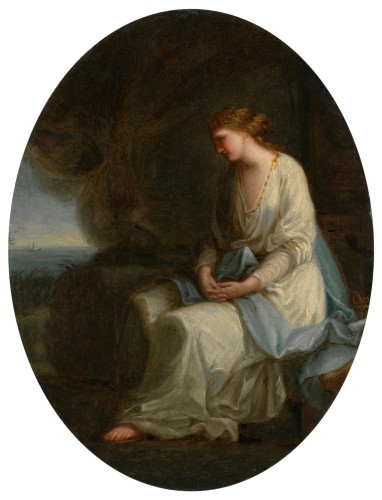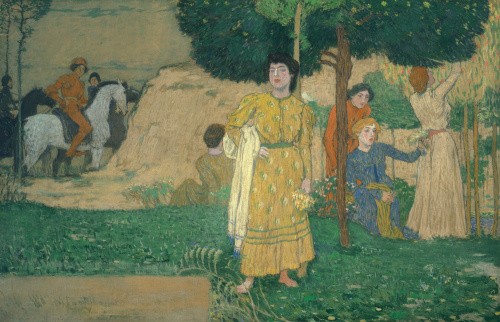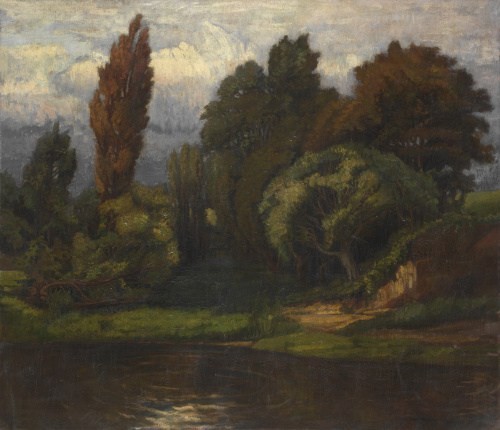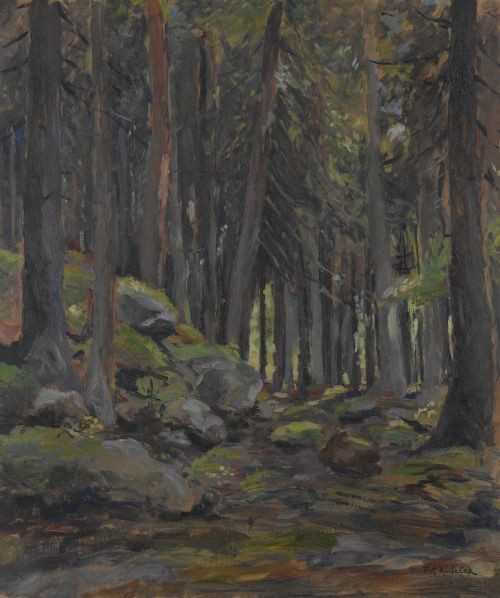Knüpfer, Beneš
Beneš Knüpfer
(12 April 1844 Frýdštejn u Sychrova – 18 November 1910 at sea during the journey to Ancona)
The Sea, [1890s]
Oil on canvas, 89 × 177 cm. Signed at the bottom right: B. Knüpfer. Olomouc Museum of Art, inv. no. O 2449. Provenance: the painting was donated to the Olomouc Museum of Art by Jiří Emler in 2006.
Knüpfer was originally a history painter and portraitist but then he shifted his interest to marine art and Neo-Romanticism, a movement which combined poetical visions with erotic fantasy. In his youth Knüpfer painted shop signs for shops in the Lesser Town in Prague. When he was 21 years old, he became a student of Antonín Lhota at the Prague Academy (1865–1868) and later a regular student of the Academy under Josef Maryáš Trenkwald (1868–1870). He also studied at the Academy in Munich (1870–1878) under prof. A. Raab, Alexander Warner, and Karl von Piloty. Piloty liked Knüpfer and asked him to help him with the decoration of the Munich town hall. Piloty also inspired Knüpfer to create the painting Götz von Berlinchen at the Council in Heilbronn (1877), for which he received a scholarship to study in Rome. He stayed in Italy for the rest of his life. He also visited France, England and Crimea (1898, 1903). He spent some time in Sicily and Tunisia (1909). In 1909 and 1910, he had his works in exhibitions in the Topičův Salon in Prague and was badly hurt by the harsh criticism from both exhibitions. He was also criticized for his cosmopolitanism which was unpopular at that time and seen as a hindrance to the creation of national culture. Similar to Otakar Lebeda and Antonín Slavíček, Knüpfer committed suicide. He jumped into the Adriatic Sea between the Austrian town Rijeka and Italian port Ancona during a cruise on the ocean liner William.
This typical poetic painting by Knüpfer depicts the sea with mythical sea creatures, realistic rocky cliffs and convincing waves. Knüpfer moved his attention to sea painting after 1879 when he moved to Porto d’Anzion by the Tyrrhenian Sea. Knüpfer combined his paintings with Roman mythology. Apart from contemplative monks indifferently strolling through blooming landscapes with cupids, he also started to depict fishermen and tanned sailors. Knüpfer was more and more interested in the sea. In his fantasy the cliffs were full of naiads, tritons and sirens.
The same goes for the Olomouc painting with the overcast sky. A beautiful naiad with long hair and feminine curves jumped up on a rock emerging from heavy seas. This enigmatic creature, turned away from the viewer, is disturbed by Triton who surfaced near a long reef and is now plunging back into the foamy water after his rival. The scene depicts a duel for the naiad; Knüpfer created several versions of this popular painting. The painting was inspired by another painting by Knüpfer The Duel of Tritons which was awarded the golden medal by the Archduke Karl Ludwig at the World’s Fair in Chicago in 1892. It was later bought by the archduke’s brother, Emperor Franz Joseph I, and displayed in the Picture Gallery of the Viennese Court Museums. This fact is well known, but people usually do not know that Archduke Karl Ludwig visited Princes de Rohan in Sychrov and Prague where Knüpfer’s family lived.
Knüpfer’s poetic paintings can be placed among other Neo-Romantic works. He can be associated with „German Romans“, artists using mythological subjects and combining nudes with landscape (Feuerbach, Marées), and other sea painters such as Swiss artist Böcklin. Unlike Böcklin, who was obsessed with mystique and death, Knüpfer did not venture on this dangerous path. He rather focused on erotic and, at the same time, poetic paintings which were popular among viewers. From the 1890s he created paintings with traces of symbolism and neo-Romanticism and exhibited them mainly in Paris, Munich, Berlin and Vienna. In 1898 he was a founding member of the Union of Creative Artists and he was also a member of the Vienna Secession till 1902.
Marie Mžyková


